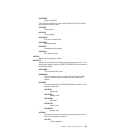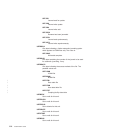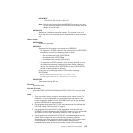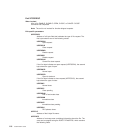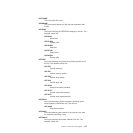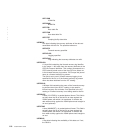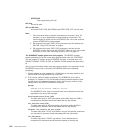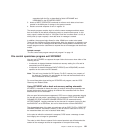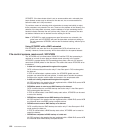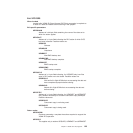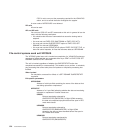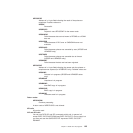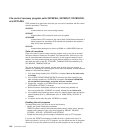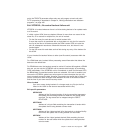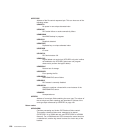associated with the file, as described by fields UEFLNAME and
UEDSNAME in the DFHUEFDS DSECT.
3. Issues a WRITE OPERATOR command to write as much data as has been
created in the 690 bytes of storage to the system console.
4. Returns a normal response of zero in register 15.
The sample program contains logic to write the same messages and data areas
that are written on the default processing path to a transient data queue. In this
case, output is edited into lines of 132 bytes. Each line is written when it is full, at
which point (or upon request) a new data area or message is started.
In addition, the program logic allows for other VSAM error codes to be tested.
These can be actioned to follow existing paths within the program, or tailored to use
all or part of the set of messages and data areas already defined. Alternatively, the
sample program can be customized to expand the set of messages and data areas
written.
Related concepts
“The file control state program sample exit program” on page 19
File control open/close program exit XFCNREC
You can use XFCNREC to suppress the open failure that occurs when either of the
following occurs:
v A mismatch is detected between the backout recovery setting for a file and its
associated (non-RLS) data set.
v A mismatch is detected because BWO(TYPECICS) and LOG(NONE) are both
specified on the same non-RLS dataset.
Note: This exit is not invoked for RLS opens. For RLS, recovery is a property of
the data set. Therefore it is not possible for files and their base data set to
have unmatched recovery attributes.
For more information about writing an XFCNREC exit program, see the CICS
Recovery and Restart Guide.
Using XFCNREC with a back out recovery setting mismatch
XFCNREC is intended for those who want to continue with open processing even
though the backout recovery settings for different files associated with the same
base data set are not consistent.
After an open failure has been suppressed, CICS can no longer guarantee integrity
for the data set and marks it accordingly. Any subsequent EXEC CICS INQUIRE
DSNAME OR CEMT INQUIRE DSNAME RECOVSTATUS command returns
NOTRECOVABLE. Logging continues for the data set for requests via any file that
has BACKOUT on its definitions, but not for those that do not have BACKOUT.
The mismatched state of the data set continues until an EXEC CICS or CEMT SET
DSNAME REMOVE command is issued, or until an initial or cold start of CICS. (if
the associated data set is not in backout failed state).
At the point at which the mismatch is accepted, CICS issues a message to warn
that integrity can no longer be guaranteed.
The order in which files are opened for the same base data set will determine the
content of the message received on suppression of an open failure using
Chapter 1. Global user exit programs 121



